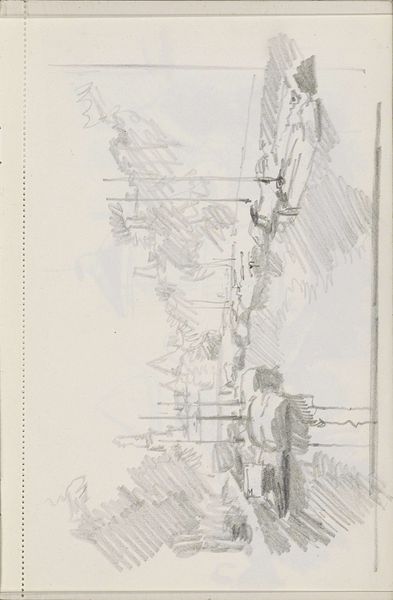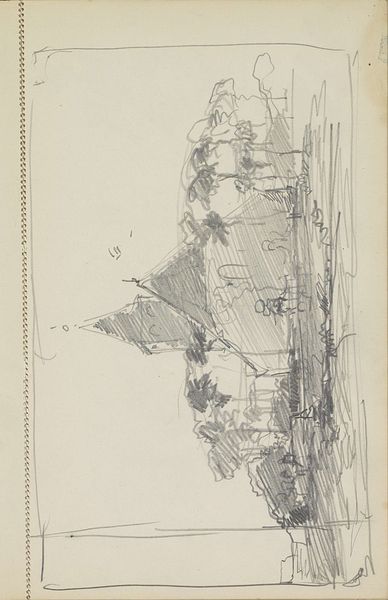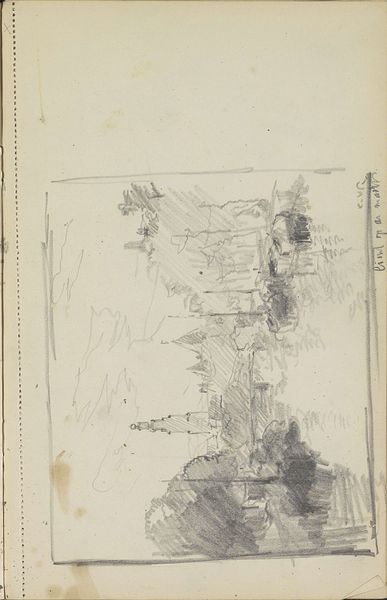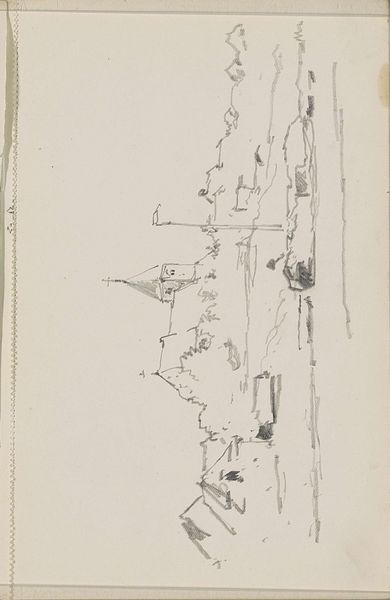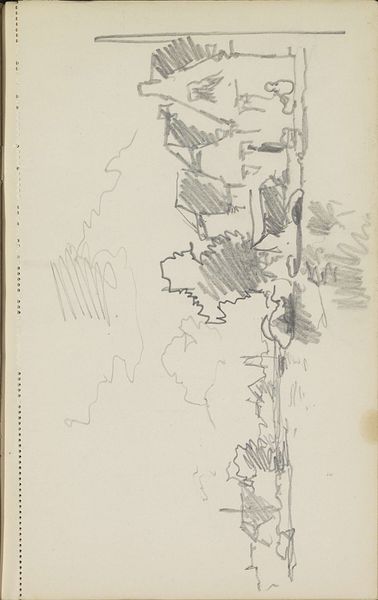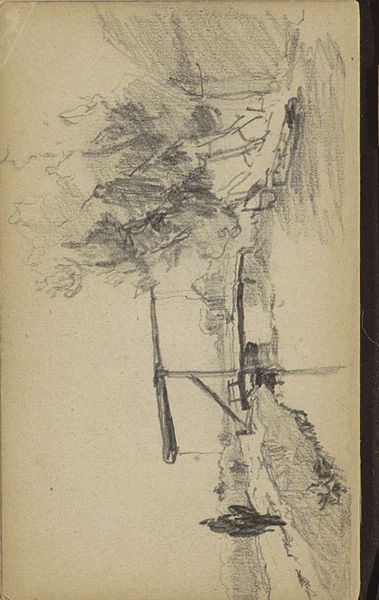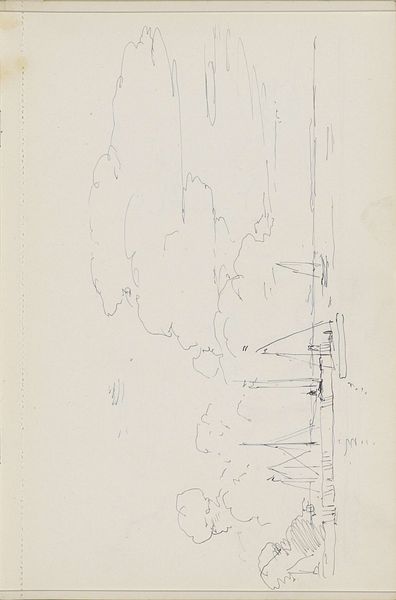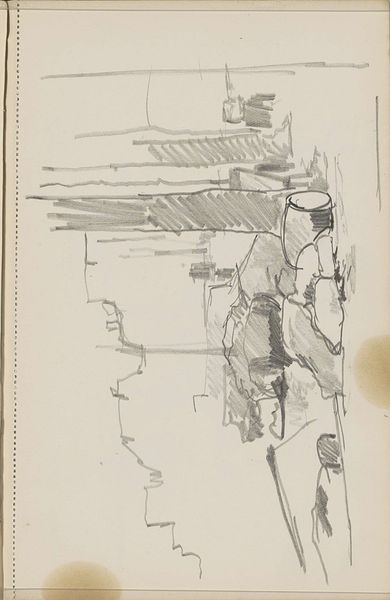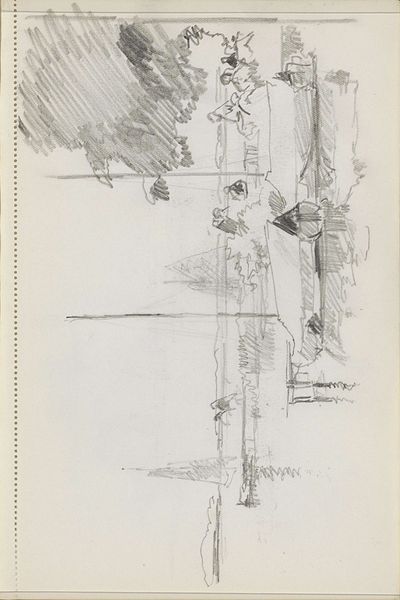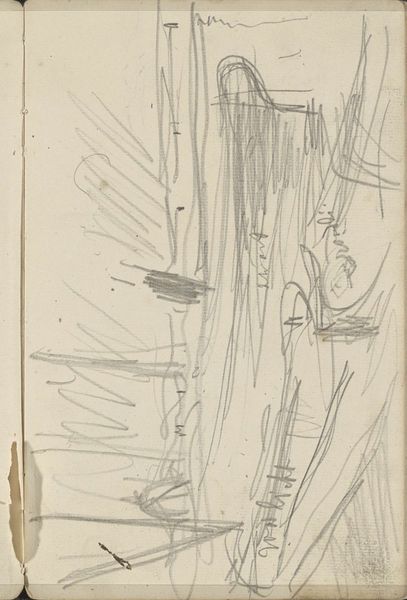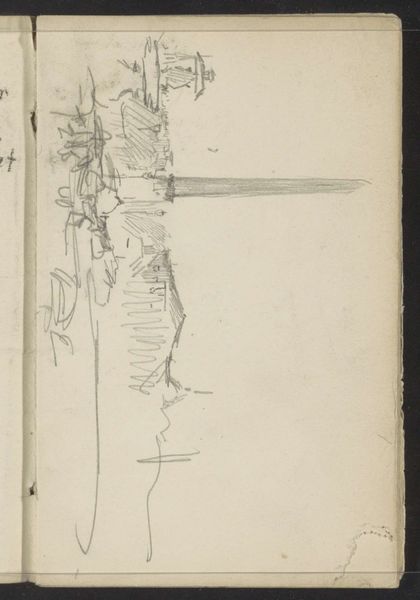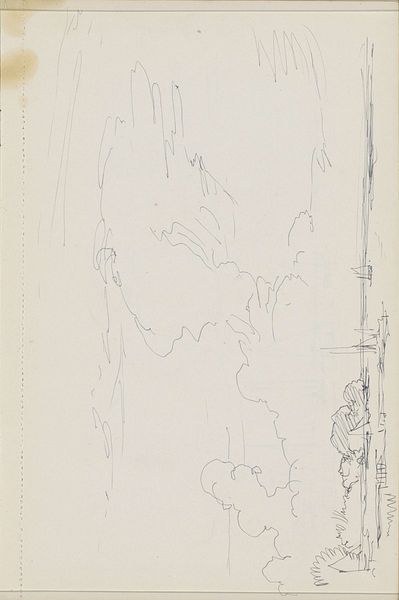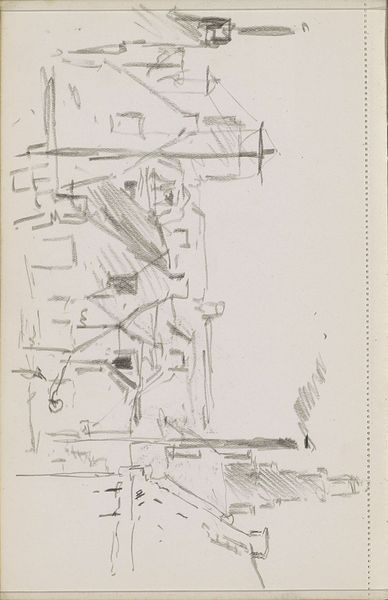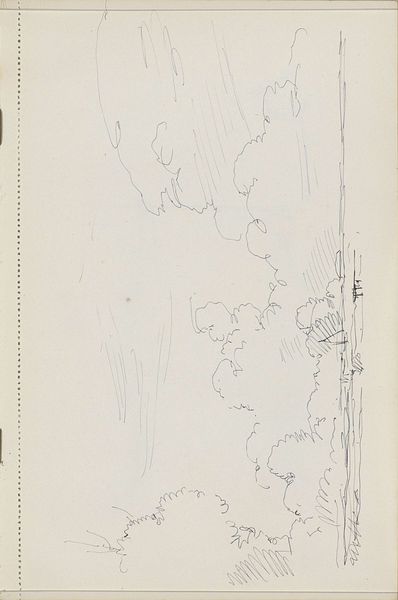
drawing, paper, pencil
#
drawing
#
paper
#
pencil
#
abstraction
#
line
Copyright: Rijks Museum: Open Domain
Curator: This is "Studie," a drawing on paper made with pencil by Cornelis Vreedenburgh, dated between 1890 and 1946. It's currently held here at the Rijksmuseum. Editor: My first impression is one of fragmented construction, like a building or scaffolding only partially realized. The lines feel tentative yet intentional. Curator: That's a keen observation. Looking at Vreedenburgh's process, you see a direct engagement with materiality—pencil on paper. What constraints or freedoms does this choice offer? How does the grayscale medium affect the accessibility of this image for, say, colorblind audiences? Editor: I’m interested in how this abstraction challenges traditional landscape art and speaks to social upheaval. Where does this unfinished scene situate itself within power dynamics, considering issues of class, labor, and urbanization happening during this period? Curator: Exactly! The loose lines imply speed and spontaneity but also could be interpreted in other ways. How did societal factors like available paper or the role of drawing within the academic world influence the making of this piece? We need to understand what the implications might be related to access, such as: was it for everyone or an elite few who could afford drawing instruments? Editor: I read that the drawing medium connects to historical conditions shaping access to artistic education and professional pathways for diverse social identities. Are there invisible labors shaping artistic production? How are notions of craft, skill, and authorship socially determined and impacted by Vreedenburgh’s positionality? Curator: That's insightful. The intersection of line, form, and the societal structures are key to appreciating not only the artwork but its very means of existence. The support of wealthy patrons impacted availability of materials like quality paper; it's key for researchers and art viewers alike. Editor: Thinking about the absence of detail in the piece, this evokes feelings of alienation amid rapid modernization and how such emotions manifest in everyday objects. Also, it compels consideration for other marginalized artists unable to freely pursue the luxury of artmaking, reminding us about collective histories that lie untold, as well as access in galleries like our very own! Curator: Well put. Considering "Studie" through this lens offers us valuable lessons, enabling the possibility of interrogating material access with inclusivity through the act of studying art. Editor: It truly allows art to question us, revealing truths beyond immediate viewing!
Comments
No comments
Be the first to comment and join the conversation on the ultimate creative platform.
